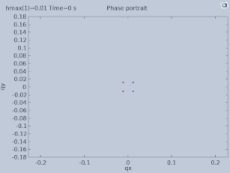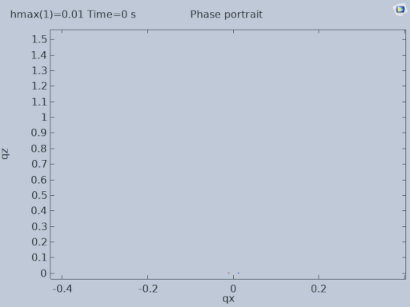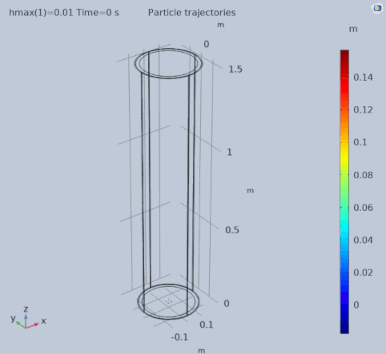Center for Emerging Energy Sciences
Supplementary Materials from Publications
This is a location where we can make various pieces of supplementary materials publicly available. Often times, journals limit the number of supplementary material files that authors are allowed to submit with their published articles. We have listed published articles below and included a description of each relevant supplementary file.
Sandeep Puri, et al., Alpha Particle Detection in High Magnetic Fields with Applications in Designing Fission Fragment Rocket Engine. Nature Scientific Reports. Under Review.
This is a link to the supplementary materials. The GIF images showing particle trajectories are included below.



John Gahl, Andrew K. Gillespie, Cuikun Lin, R. V. Duncan. "The Fission Fragment Rocket Engine for Mars Fast Transit," arXiv:2308.01441 (2023)
Relevant Input File: UO2-Layer.i
This is a simple input file used to simulate neutrons incident on a slab of uranium oxide. 14-MeV neutrons were incident on a layer of uranium oxide. The simulation tracked heavy ions generated to estimate the percentage that escaped as a function of the thickness of the uranium oxide layer. We have only included one input file here, but if anyone wishes to repeat this simulation, the thickness can be changed by editing surface card #301. This input file contains a few extra vacuum cells that we had used to track a more complicated set of simulations. However, they have no bearing on the results presented in this publication. To create figure 1 in this article, we simply looked at the following: (1) the total number of heavy ions created, (2) the population in the UO2 layer, and (3) the population that escaped that layer.
Andrew K. Gillespie, Cuikun Lin, R. V. Duncan. "Photoneutron Yield for an Electron Beam on Tantalum and Erbium Deuteride," arXiv:2308.02629 (2023)
Relevant Input File 1: Tantalum-Only
This is a simple input file used to simulate the electron beam incident on a tantalum layer. Surface cell #403 may be edited to change the thickness of the tantalum layer.
Relevant Input File 2: Ta-ErD3-Layers
This is a simple input file used to simulate the 10-MeV electron beam incident on a tantalum layer followed by a layer of erbium deuteride. The tantalum layer may be included or deleted to reproduce all the data in figure 7 of the article. The tantalum thickness was kept constant at 0.15 cm and surface cell #401 may be edited to change the thickness of the erbium deuteride layer.
Andrew K. Gillespie, Cuikun Lin, Matthew Looney, R. V. Duncan. "Simulating Radiation Shielding Effectiveness Against Three Neutron Sources," arXiv:2309.15125 (2023)
Relevant Input File 1: Warehouse, shielding slabs, and person zones
This involves a point source inside the wrehouse with three tally zones representing locations of an operator near the source. This is close to a realistic model of the shielding and size of a person. However, the F4 tally requires many histories to pass all the statistical checks. The instances of "NewVariableA" and "NewVarB" were used as variables for submitting batch jobs to the high performance computing center. As an example, use 110 and 220 for these variables, respectively. The thin layer of polyethylene was included to contain the water and kept its dimensions constant for each iteration of the simulation.
Relevant Input File 2: Warehouse, cylindrical shielding, and cylindrical shell tally zones
This involves a simplified model that helps calculate the equivalent dose in a similar manner to the first input file. This involves point source surrounded by a cylindrical shell of shielding material and another cylindrical tally zone representing the distance from the source to an operator. This model was ran with a sufficient number of histories to pass all statistical checks for the F4 tally. It matches the more realistic model for shielding thicknesses of interest. The instances of "NewVariableA" was used as a variable for submitting batch jobs to the high performance computing center. As an example, use 110 for this variable. The thin layer of polyethylene was included to contain the water and kept its dimensions constant for each iteration of the simulation.
Department of Physics and Astronomy
-
Address
Texas Tech University, Department of Physics & Astronomy, Box 41051, Lubbock, TX 79409-1051 -
Phone
806.742.3767 | Fax: 806.742.1182 -
Email
physics.astronomy.webmasters@ttu.edu | physics.academic.advising@ttu.edu
